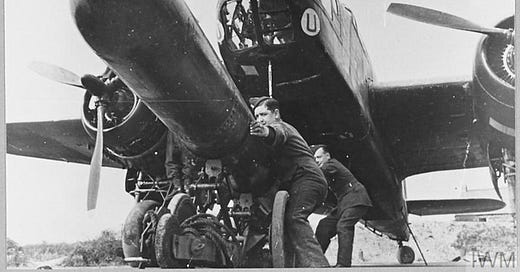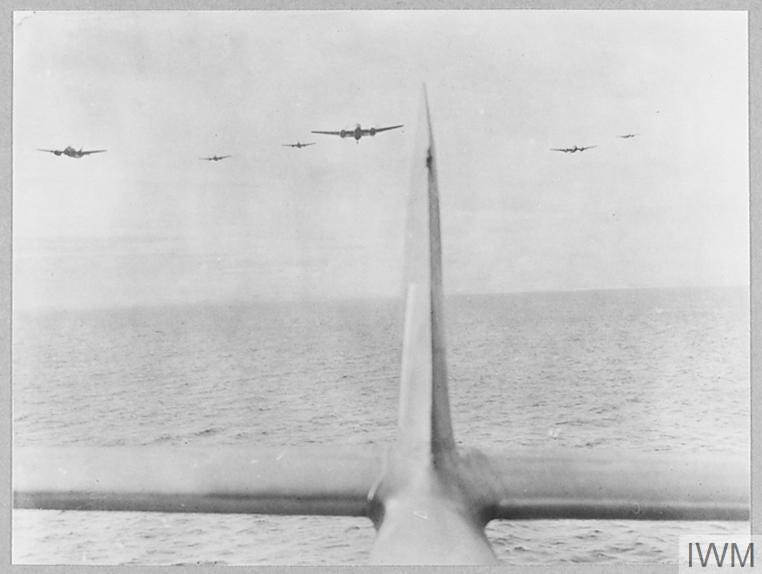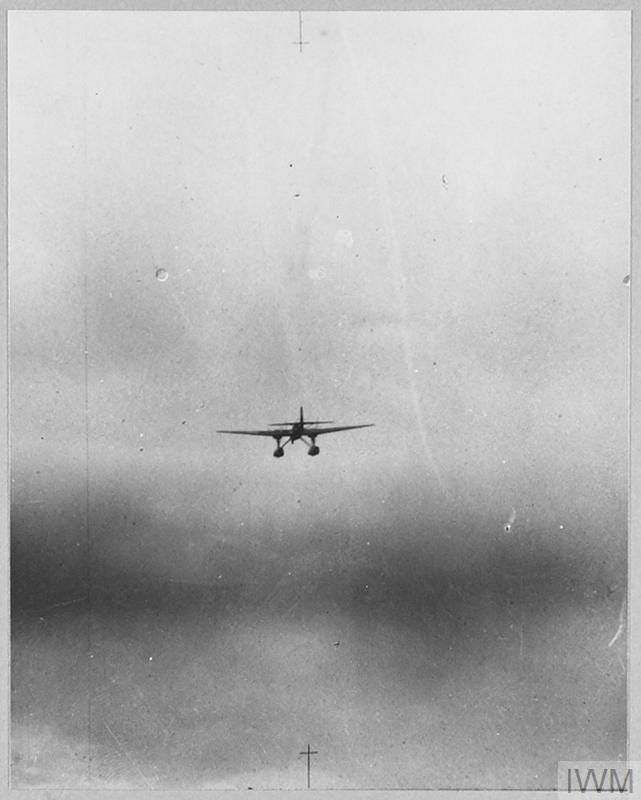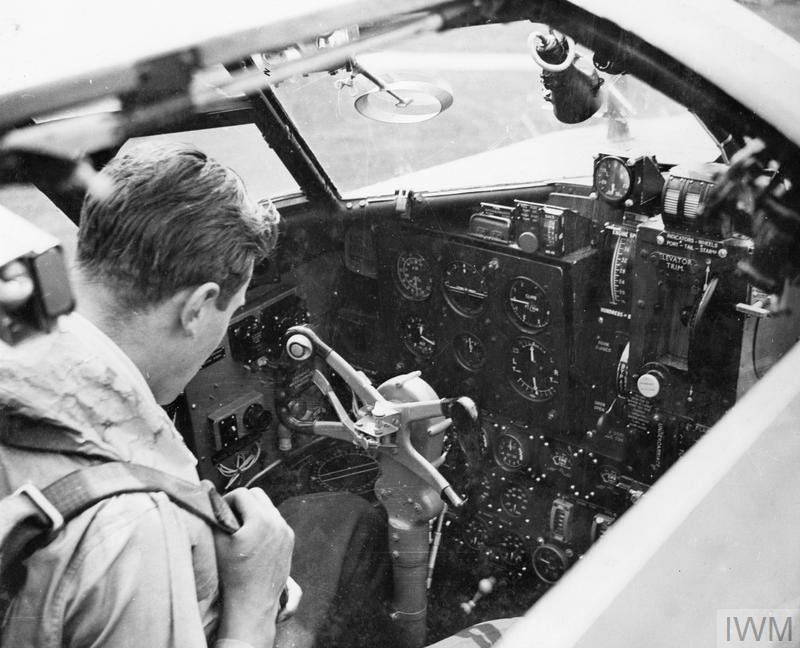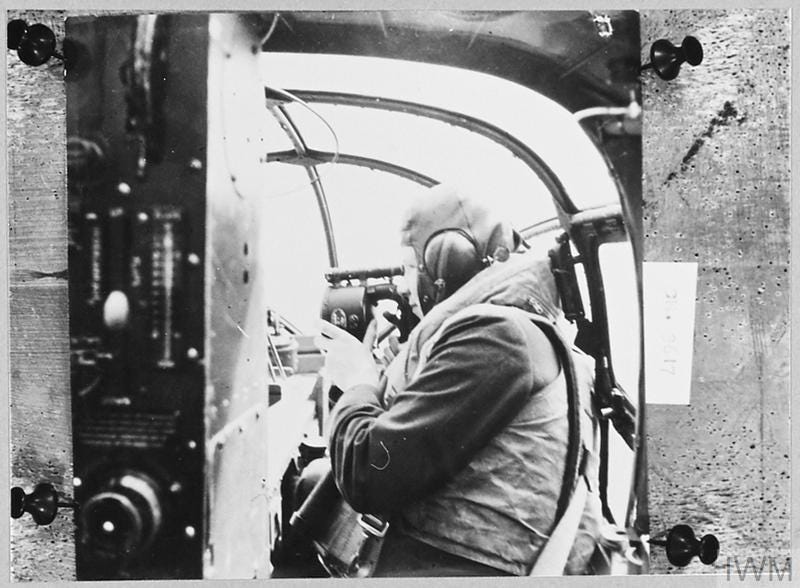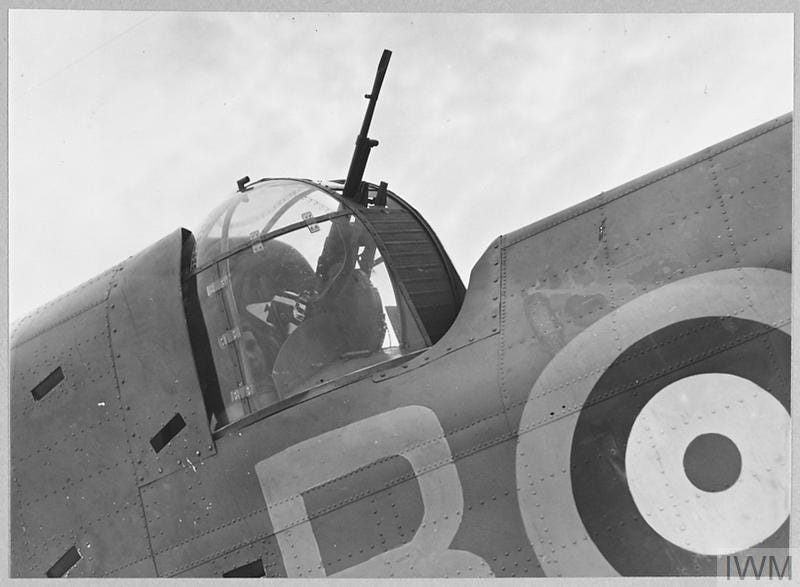The Bristol Beaufort was the main offensive aircraft of RAF Coastal Command in the early part of the Second World War for the aggressive anti-shipping role and replaced the older Vickers Vildebeest. The Air Ministry put out requests for designs for new torpedo bombers and ordered both the Beaufort and the Blackburn Botha from the design board. The Beaufort would suffer from severe engine issues that required the aircraft to be withdrawn from operations until 1941 but the Botha was found to be pretty much unsuitable as a torpedo bomber.
When we generally talk about RAF losses during the Second World War it is usually the Bomber Command lads who are marked as coming off worse but in November 1942 there was a survey of life expectancy of the various wings of the RAF and the Light bombers had a 25.5% chance of surviving your first tour and a 6.5% chance of surviving two tours. The Beaufort crews were looking at a 17.5% chance of surviving the first tour and 3% of two. It was incredibly dangerous.
The biggest problem was that you had to fly low and slow straight at the enemy vessel and its guns. If you missed with your torpedo you would get direct flak into your belly and then tail as you flew over the target before you could turn away. There was also very little in the way of fighter escort so if the convoy had an escort you would be bounced by Bf 109s or Bf 110s and there would be little or no chance of survival.
This image, released in 1942 shows Beauforts on the hunt for an enemy convoy. Originally the Beauforts would carry out patrols and sweeps with each aircraft being assigned an area of the Norwegian or Dutch coast where they would search for enemy shipping before diving to attack and then calling in aircraft from nearby search patterns to attack if they had the fuel to do so. This was costly and not very efficient and so strike wings were developed during the defence of the Mediterranean in 1931. The Beauforts would go out en masse and attack convoys and would start to be escorted by Beaufighter squadrons who would dive and pepper the ships with cannon fire to subdue the gun crews and then the Beauforts would strike. With the success of the strike wings and the embarrassment that was the Channel Dash saw the institution of similar strike wings in the UK. Beaufighters would escort the Beauforts on their strikes and would later replace the older aircraft and carry rockets to cause sevre damage to the target.
This image shows a Heinkel He 115 float plane and the Luftwaffe’s main torpedo bomber and mine layer in the early stages of the War taken from the nose of a Beaufort. According to the IWM caption the British machine did manage to overtake the Heinkel and the rear gunner “taken out of action” by machine gun fire but the German pilot managed to evade any further attacks.
There are always prople who are interested in control panels so here is the interior of the cockpit looking over the shoulder of Flying Officer Gadd’s shoulder into a Beaufort Mk I. Gadd would later become a Wing Commander and command the Dallachy Strike wing.
Another internal shot though this time of the navigator testing his Aldis lamp before take off. The original wartime caption apparrently says: “The Beaufort is one of the fastest bombers in the world it has something approachng fighter speed, something like fighter armament.”
Just as a comparrison the Hurricane Mk I has a top speed of 328 mph and carried eight .303 machine guns
The Beaufort Mk. II had a top Speed of 277 mph and carried three .303 machine guns, two in the turret and one in the port wing and then the bomb/torpedo load.
The closest comparrison was the Beaufort’s stablemate and predecessor the Blenheim Mk IV which had a top speed of 266 mph and carried one Vickers Machine gun in the turret.
The Junkers Ju 88 A (Germany’s newest twin bomber) had a top speed of 286 mph at 16,000 feet but really 230 mph as a typical cruising speed with three machine guns also.
So it was superior to the Blenheim, probably on par with a Ju 88 but not near the power of the Hurricane but this is war time so the truth is a little bit blurred from time to time!
The pilot signlas a thumbs up to his crew for the propaganda photographers.

Finally, the crew of a Beaufort stading on the wing of their bomber which was seen to crash by HMS Hermoine. The cruiser went to assist the airmen off Gibraltar and found them like this. All four crew were rescued.

